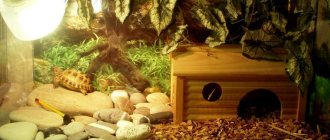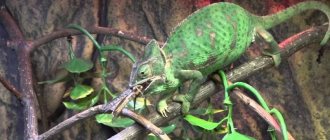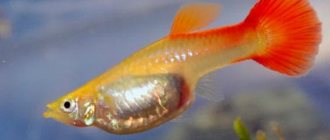Despite the fact that the turtle is unpretentious in food, its owners need to know how to properly feed the river resident.
How to recognize a swamp turtle
The European Swamp Turtle (Emys orbicularis) can often be found in temperate climates. The reptile is not in danger of extinction, so it is not in the Red Book. When kept in a terrarium, turtles can fully reproduce. To do this, you need to provide proper care and know what they feed marsh turtles at different ages.
The turtle's body is protected by a dark olive, sometimes almost black, carapace (shell). In the European swamp it is ovoid-oval and slightly flattened. The back of the carapace is more expanded than the front. The body is covered with numerous light yellowish spots. The reptile is a predator and lives in fresh water bodies. The presence of a long tail makes it easier to move in water, and with the help of powerful claws on its paws, the turtle tears meat from its prey for food. But reptiles are not constantly in the water; they also need land. That is why turtles are classified as amphibians or amphibians.
Selecting the site language
Afrikaans Albanian Amharic Arabic Armenian Azerbaijani Basque Belarusian Bengali Bosnian Bulgarian Catalan Cebuano Chichewa Chinese (Simplified) Chinese (Traditional) Corsican Croatian Czech Danish Dutch English Esperanto Estonian Filipino Finnish French Frisian Galician Georgian German Greek Gujarati Haitian Creole Hausa Hawaiian Hebrew Hindi Hmong Hungarian Icelandic Igbo Indonesian Irish Italian Japanese Javanese Kannada Kazakh Khmer Korean Kurdish (Kurmanji) Kyrgyz Lao Latin Latvian Lithuanian Luxembourgish Macedonian Malagasy Malay Malayalam Maltese Maori Marathi Mongolian Myanmar (Burmese) Nepali Norwegian Pashto Persian Polish Portuguese Punjabi Romanian Russian Samoan Scottish Gaelic Serbian Sesotho Shona Sindhi Sinhala Slovak Slovenian Somali Spanish Sudanese Swahili Swedish Tajik Tamil Thai Turkish Ukrainian Urdu Uzbek Vietnamese Welsh Xhosa Yiddish
Turtle feeding standards
Despite the fact that reptiles are not picky about food, you need to feed swamp turtles at home correctly, taking into account their age. Small turtles that are actively developing are fed once a day, but algae suitable for food must always be present in the terrarium. A serving of food consists of two or three pieces of fish measuring 1 cm3.
When the turtles grow up and their shell reaches a size of 9-13 cm, they are given fish after 1-2 days; the presence of algae is also required. A serving of food consists of two or three pieces of fish measuring 2-3 cm3.
Mature adults should be fed no more than 2-3 times a week. A single portion is selected individually, depending on the amount of food that the turtle is used to eating.
Sense organs
This animal is distinguished by a high level of development of sensory organs. The main features are as follows:
- Vision. Red-eared turtles distinguish colors, choose the most suitable places to lay eggs, and look for other turtles. They also see moving objects, the distance to which can reach 40 m, well distinguishing predators and prey from each other.
- Smell. These reptiles search for food thanks to their developed sense of smell.
- Hearing. These animals hear poorly. This is due to the fact that their ears are hidden under the skin. Therefore, red-eared turtles react only to vibration.
- Touch. The turtle's shell is equipped with nerve endings, so it feels touch. The presence of taste buds allows these creatures to choose tastier foods.
- Voice. The vocal apparatus of turtles is not developed; they are only capable of snorting and hissing. Sometimes they make a squeak.
What can marsh turtles eat?
When purchasing a pet, you need to ask the seller what to feed the marsh turtle, because the health and well-being of the amphibian depend on this.
Turtles are given raw food, the temperature of which should be close to the temperature of the water and air in the terrarium.
Reptile food is conventionally divided into main and additional.
1. Basic food. This includes products of animal origin. Turtles enjoy eating:
- lean fish meat (haddock, cod, gobies, perch, pollock); Moreover, the fish is given live or frozen and not peeled (it is preferable for young specimens to be given whole small fish, and for adults - chopped into large pieces or whole fish);
- liver components: liver and heart of chicken or calf;
- crustaceans and arthropods: daphnia crustaceans, worms, bugs with previously torn off legs;
- marine life;
- small mammals and amphibians.
2. Additional food, which includes dry and vegetable food. Administration once every seven days is sufficient:
- dry food for aquatic turtles;
- plant foods, which consist of algae (water hyacinths, duckweed, pistia, hornwort), thinly sliced vegetables (carrots), wild flowers (clover, dandelion, daisies).
Vitamin complexes should be given only as directed by a veterinarian.
Types of feed
The main dish in the diet of a marsh turtle is fish . You can buy her a variety of fish. The main thing is that it is not too oily. The reptile's diet should include gobies, pollock, cod, and hake. The fish can be either fresh or frozen, but it should not be cold.
You can feed the turtle meat. Innards are perfect for her - beef and chicken hearts, liver, stomachs. However, white meat should not be given to a swamp dweller. It can be pampered with insects and crustaceans. She will not refuse daphnia crustaceans, earthworms, bloodworms, wood lice, all kinds of beetles, grasshoppers, and legless locusts. The reptile will happily eat freshwater snails, frogs, tadpoles, shrimp and squid.
For normal growth and development, turtles need vitamins and mineral supplements. Calcium must be added to the reptile's food, which plays an important role in the formation of a hard shell. A soft shell indicates a deficiency or a serious illness in your pet. If your turtle's diet is varied and balanced, mineral supplements will not be needed. It is very important to give turtles fish with entrails and bones, and snails. They serve as a source of calcium for them. To avoid its deficiency, they need an ultraviolet lamp and a mineral neutralizer block.
What not to give to turtles
When consulting with a seller about what to feed a marsh turtle, you need to ask what is contraindicated for it. There are foods that are prohibited to feed reptiles or are possible, but in limited quantities:
1. The food of amphibian pets can be diluted with some types of products, but in limited quantities:
- plants containing oscalates;
- goitrogenic plants, which contribute to iodine deficiency, as a result of which goiter grows;
- products with excess phosphorus content, which prevents calcium from being absorbed;
- purine and alkaline additives;
- insects with spiny legs, fatty foods;
- nuts.
2. Prohibited feeding includes:
- poisonous plants;
- citrus peel, fruit and berry seeds;
- canned food and dry food for mammals;
- human food (porridge, cheeses, bakery products, fermented milk products, thermally processed foods).
With a properly selected diet, the European marsh turtle will live longer than if fed unbalancedly and chaotically. The average age of reptiles living in the house is 60-70 years, but eighty-year-old specimens are also known.
Mineral supplements
If your reptile's diet does not include enough nutrients, this can negatively affect its overall health. Moreover, some diseases in turtles occur precisely because of a poor diet. To avoid this kind of problem, experts recommend regularly adding various mineral mixtures to the feed.
The most important substance for turtles is calcium. It is necessary for the development of the skeletal apparatus and shell of the reptile. Regular eggshells are used as a mineral supplement. It is crushed and mixed with the main food. You can replace the shell with bone meal or calcium sulfate.
In addition, you should provide the turtle with all the necessary vitamins. At the moment, special complexes for each type of reptile are available for sale. Their composition is designed taking into account all the characteristics and needs of the turtle. It is necessary to introduce such complexes into the diet after consulting a doctor, because you can incorrectly determine the dosage of the drug yourself and thereby harm the reptile.
Feeding rules
Knowing what to feed a marsh turtle at home is not enough; you also need to be able to do it correctly. Experienced breeders have developed several rules, adhering to which the owner will be able to enjoy the company of the reptile for many years:
- Turtles up to two years of age and pregnant females are fed once a day, and adults - 2-3 times a week.
- The main food is animal food. Swamp turtles are predators, so meat and fish are their main food. You should not feed turtles minced meat, it spoils the water.
- Turtles should be trained to take food from tweezers. They will feed with their heads curiously extended out of the water or on land. You should adhere to the feeding schedule, then the turtles will get used to the desired regime and recognize the owner.
- Plant foods should be introduced gradually as the turtles grow older. You can sometimes introduce small fish into the terrarium to awaken the hunter's instincts in your pets and entertain them.
- There is no need to give turtles anything to drink. And once every 7-10 days it is advisable to arrange a day of ablution. It is necessary to clean the shell of plaque with a soft cloth.
Calcium must be present in the diet so that leg fractures do not occur and the carapace is formed correctly.
Care
Caring for a marsh turtle is not difficult, the main thing is to recreate natural conditions. Maintain the aquaterrarium in a timely manner, monitor the diet and temperature, monitor your pet, and if you suspect an illness, do not delay treatment, then the marsh turtle will live a long time.
Stern
Unlike land turtles, European marsh turtles are predators. Feed your pet a variety of foods:
- lean fish (haddock, pollock, cod, perch);
- small snails and crustaceans;
- earthworms;
- bloodworm;
- mussels;
- shrimp;
- baby frogs;
- live aquarium fish;
- branded food.
Protein foods are the basis of the diet. Serve moist food at room temperature. Vegetable feeding is also required (15% of the diet):
- dandelion leaves;
- salad;
- spinach;
- non-acidic fruits;
- carrot;
- duckweed.
While feeding, the reptile scatters pieces of food and quickly pollutes the water. To keep the water clean, feed the animal in a different container. Give food to young individuals and pregnant females every day, to adults - once every 2-3 days. Unlike land turtles, European marsh turtles are easy to train. Feed with tweezers, pets will stretch their heads to take food. Hand feeding is not advisable, as later the animal associates hands with eating, which makes independent feeding difficult. Nutrition occurs in water.
Hygiene
It is enough to wipe the shell of a swamp reptile with a soft sponge or brush without soap once a week. Use warm water. If the turtle is not in the mood, wait for the right moment.
Age determination
Find out the age of the reptile by the rings on the scutes of the shell. During the first two years of life, the growth ring appears within 3–6 months. After this, one ring is added annually. The pattern of an elderly marsh turtle is unclear. You can also find out the approximate age of a reptile by the length of its shell. In newborns, the length of the shell is up to 3 cm; every year the shell becomes 2 cm longer. By one year, the reptile has a 5-centimeter shell, while a two-year-old turtle has 7 cm.
Arrangement of the terrarium
European marsh turtles spend a lot of time in the water, and this must be taken into account when keeping them in the house. A terrarium for a reptile should be spacious, with a volume of at least 100 liters. Breeders claim that the larger the terrarium, the larger the turtle will grow. It is better to take not a tall, but a wide aquarium and arrange an island of land in it, which usually occupies a third of the entire area. For these purposes, it is permissible to use a large stone with gentle edges and beautiful driftwood.
For a comfortable existence in the terrarium you should install:
- a lamp for heating the air, which is installed above the island;
- an ultraviolet lamp, which is needed to maintain health;
- filters for water purification, which keeps the terrarium clean;
- special bottom soil that makes it look like the bottom of a lake;
- edible seaweed for the turtle to snack on.
You should not choose algae with intense growth force, otherwise they will occupy the entire space of the terrarium.
Is it necessary to change the water?
The water in the terrarium must be constantly clean. The filter partially copes with this, but the water should be changed regularly to prevent the development of diseases. A complete water change and cleaning of the walls of the terrarium are carried out every 1-1.5 months, and partial - as needed. To ensure long-term preservation of the cleanliness of the terrarium, you should give food to your pet outside of it, and not feed the marsh turtle directly in the water. Settled tap water is suitable for filling the aquarium.
Dermatomycoses
Most often they arise due to gross violations of the conditions of detention, as a result of which the immunity and general resistance of the body are reduced. They are characterized by lesions of the skin or shell, in which a dirty gray coating appears on their surface, which later leads to the death of the tissue underneath. In this case, detachment of individual plates of the shell and its deformation may also occur.
Treatment must be started as early as possible; only in this case can success be achieved. For therapy, a solution of malachite green is used at a concentration of 0.15 mg per 1 liter of water. A turtle is bathed in it for 3 days for 15-20 minutes. After which the damaged areas are treated with Canesten cream.
If the lesion is severe, the intervention of a veterinarian will be required, who will remove the affected areas surgically. Also, in some cases, when bathing a turtle, it may experience eye irritation. The best prevention of dermatomycosis is good living conditions and a balanced diet.
Do turtles need hibernation?
European marsh turtles naturally hibernate for the winter. They need this in order to slow down metabolic processes in the body, since reptiles are cold-blooded creatures and are not able to regulate heat exchange.
At home, a constant temperature of water and air is maintained, so there is no need for turtles to hibernate. Some experienced breeders believe that such a procedure can harm their pets, and it is also quite difficult to organize.
If you know the principles of caring for an animal, how and what to feed a marsh turtle, this will help prevent maintenance mistakes that can harm your pet. And then the reptile will keep the owner company for many years, perhaps until old age. After all, European tortoises are long-livers and can live up to 80 years.
Other features of home maintenance
| What not to feed | Possible diseases | Reproduction in captivity |
| Like any predator, European marsh turtles prefer meat. Therefore, there is no point in giving them any herbs, vegetables or fruits. Pets will not pay the slightest attention to them. Do not give your turtles questionable drugs intended for humans or other animal species. | Diseases that are mainly relevant for marsh turtles kept at home:
Diagnosis and treatment of turtles should be carried out exclusively by a veterinarian. | Bog turtles become sexually mature at approximately 6-8 years of age. Males show significant signs of attention to their future chosen ones. Reproduction in the wild, as one would expect, is much easier than in captivity. But even those turtles that live at home can successfully give birth to offspring. The main thing is to accurately determine the optimal time for this. The eggs are laid on land, and after that they must be carefully and without turning over, placed in an incubator with a temperature of 25 to 30 degrees above zero. |
And here's another thing - swamp turtles have quite tasty meat. This was known back in the Middle Ages. True, it is unlikely that you are going to feast on your pet, so it would be better to simply create the highest quality conditions for him to live in your home.










